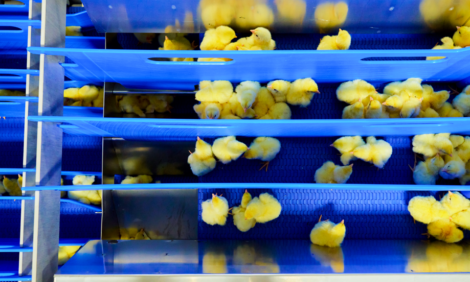



Experimental Reproduction of Enterococcal Spondylitis
Researchers at North Carolina State University have had some success in reproducing enterococcal spondylitis (ES) experimentally under controlled laboratory settings, helping to shed more light on this emerging disease that causes significant losses in broiler breeders in North America and Europe.Enterococcal spondylitis (ES; previously called Enterococcal vertebral osteoarthritis, EVOA) is a disease of broiler breeders, according to Michael Martin and John Barnes of the College of Veterinary Medicine at North Carolina State University. Reporting on a project sponsored by US Poultry & Egg Association, they continue that ES has been observed in multiple breeder flocks from several commercial integrators in North Carolina, causing significant mortality and morbidity. There are reports of ES affecting poultry across North America and the European Union.
Enterococcus cecorum has been recovered in heavy, pure cultures from most of the spinal abscesses in the flocks observed in North Carolina. Sporadic spinal abscesses similar to ES in poultry caused by other bacteria, including Escherichia coli and Staphylococcus aureus, have been described. However, outbreaks of spinal abscesses in broiler and broiler breeder flocks associated with E. cecorum had not previously been documented prior to 2007, making this an emerging disease.
In a study on the pathogenesis of ES, it was determined that oral challenge is the most likely route of infection and that coccidia infection may be a predisposing risk factor for development of the disease. Objectives in this study were: 1) develop an experimental model for ES by using multiple oral inoculations of E. cecorum, with and without coccidia challenge, to develop a reproducible experimental model to permit evaluation of other potential risk factors for the disease including nutrition, other infectious and parasitic agents, genetics, and management practices; 2) examine the role of coccidia infection in development of ES; and 3) continue to determine the pathogenesis of ES.
Martin and Barnes report that they were able to reproduce ES caused by E. cecorum experimentally under controlled laboratory settings. However, the disease was reproduced in only one out of 16 birds (6.3 per cent) and only in the group that was challenged with both E. cecorum and coccidia. Lower incidence of disease may have been affected by early E. faecalis colonisation, lack of colonisation of E. cecorum based on coccidia challenge technique, or change in the pathogenesis of the disease as is evidenced by the increased frequency of broiler operations affected and decreased frequency of broiler breeder operations affected anecdotally.
These results provide further insight in the pathogenesis of ES in chickens, concluded the researchers. They suggest that the role of different Enterococcal isolates in the pathogenesis should be further evaluated as interventions, prevention, and causation is researched further.
This research provides information that may be valuable toward the development of a study design to improve the ability to re-create the disease. The research model will allow therapeutic and preventative measures to be used to study the control of ES.
Further Reading
| - | You can find out more about enterococcal spondylitis (ES) by clicking here. |
February 2012









